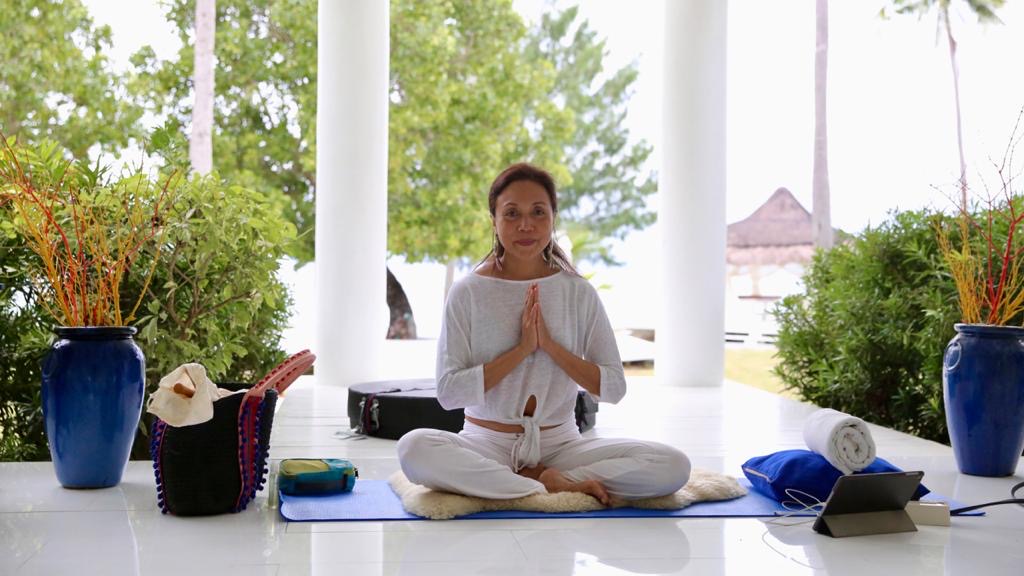When I was in Balesin for the Agle Serenity Yoga + Wellness weekend, one of the participants approached me and asked about his lower back. He said that he has been doing meditation for a month, and for some reason, his back is always uncomfortable and painful.
I observed how he sat and noticed that he was arching his lower back. I showed him how to sit correctly cross-legged and recommended to prop himself up with a pillow or a block to make sure that his hips are higher than his knees. I also gave him some hip-opening exercises. I assured him over time, and with consistent practice, his hips will open gradually and be able to sit comfortably on the floor, cross-legged, for a more extended time.
It’s funny that in Kundalini Yoga, sitting cross-legged is referred to as “Easy Pose.”
Ironically, it’s not easy to sit cross-legged on the floor! The posture allows the mind to become calm, which is the first step in mediation. In the ancient Hindu text of the Yoga Sutras of Patanjali, 2.46 states sthira sukham asanam. Translated as the posture is shira, steady and rooted; sukham, sweet and comfortable, and asanam, seated.
The classic crossed-legged position is called lotus or padmasana. One foot is on top of the opposite thigh, with the sole facing upward, and the heel is close to the abdomen, and the other foot is placed symmetrically on the opposite leg. The knees are on the ground, the torso balanced and centered. The head and neck are relaxed and shoulders back with the rib cage lifted. The chin is in the jalandhara bandha (neck lock). The tongue rests on the roof the mouth, the hands in a mudra, and eyes may be gazing inward or to the tip of the nose.
An article in Vision Times states that sitting cross-legged “every day for at least 20 minutes, the energy formed is said to enable you to climb a mountain like a young man, even at the age of 70. Apparently, it can also help you attain a state free of sickness.”
The lotus position or padmasana in Sanskrit is recognized as the best-seated posture for deep mediation.

Shiva sitting in a lotus position
Once you are in it, you can meditate very deeply and the position will maintain itself. There are very few exercises or meditations which require this posture, The benefits are: it opens up the hips; stretches the ankles and knees; calms the brain, increases awareness and attentiveness; keeps the spine straight; helps develop good posture; lessens menstrual discomfort and sciatica; helps keeps joints and ligaments flexible; and stimulates the spine, pelvis, abdomen, and bladder.
If you still feel discomfort and pain…
My advice is to check your posture and use props! As meditation is a mindfulness practice, stay focused on how you sit. With constant and consistent practice, you will be sitting comfortably still, and for a longer time, ready for inner travel.
And even if you aren’t meditating, imagine what this must-do for those who work from home sitting cross-legged? Isn’t it amazing how repositioning helps make our movement and every day better?
In loving service,
Rosan


